Join us over the next few weeks as we share our dream trips through Italy and Switzerland, aimed at informing and inspiring future jaunts to Europe. This week we set off with Brian Dore, owner of CIU Travel together with his partner and wife Maria Gabriella.

(Photo by CIUTravel via Flickr)
Maria Gabriella and I met at the Westside YMCA on Manhattan’s Upper West Side in late November or 1995. I was asked to sing a small part in collection of opera scenes that Maria was singing in and helping to organize. By New Year’s Eve we were dating, in 1998 we married, and in 2004 we started CIU Travel. We really haven’t spent much time apart since and for the last 16 years we’ve been traveling up and down Italy searching for the best experiences for our clients. So, when given the opportunity to think about a “dream trip” we both decided to create an itinerary that leaves the other one at home.
Michael Tucker and I met drinking wine. He had just published his book “Living in a Foreign Language” about buying a farmhouse in Umbria. He had also been interviewed by Wine Spectator about Umbrian wines, and gave high marks to winemakers that I know very well, so I got in touch and invited him and his wife, Jill Eikenberry, to an event at the vineyard. They graciously accepted and we’ve been close friends ever since, finding our love of food, wine, cooking, the performing arts, and laughter to be an unbreakable bond. I reached out to Mike and asked him if he’d be interested in planning a culinary adventure with me.

(Photo by CIUTravel via Flickr)
We talked about a well-thumbed 1989 copy of Le Ricette dei Ristoranti D’Italia (Recipes from the Restaurants of Italy) by Marco Guarnaschelli Gotti I’d bought a few years ago. Gotti had been the food critic for Italy’s popular Panorama magazine since 1979, and the book is a collection of recipes from some of the most famous and historic restaurants across the country. The book is 30 years old, so many of the restaurants mentioned have closed over the decades, but the traditional dishes live on. When the book was published, I was a sophomore at the University of North Carolina working part-time as cook at a local bar, and Mike, well, he was in Hollywood starring in Season 3 of L.A. Law, TV’s hottest show at the time. Both seem like millennia ago, so we thought it’d be interesting to check up on “what was hot” in the Italian restaurant scene way back when and introduce each other to some of the places we’ve fallen in love with over the years. We decided our trip would be a journey through the classics of Emilia-Romagna, a small slice of Lombardy, and Veneto.
Restaurants in bold type are featured in Le Ricette dei Ristoranti D’Italia.
A Note from Mike
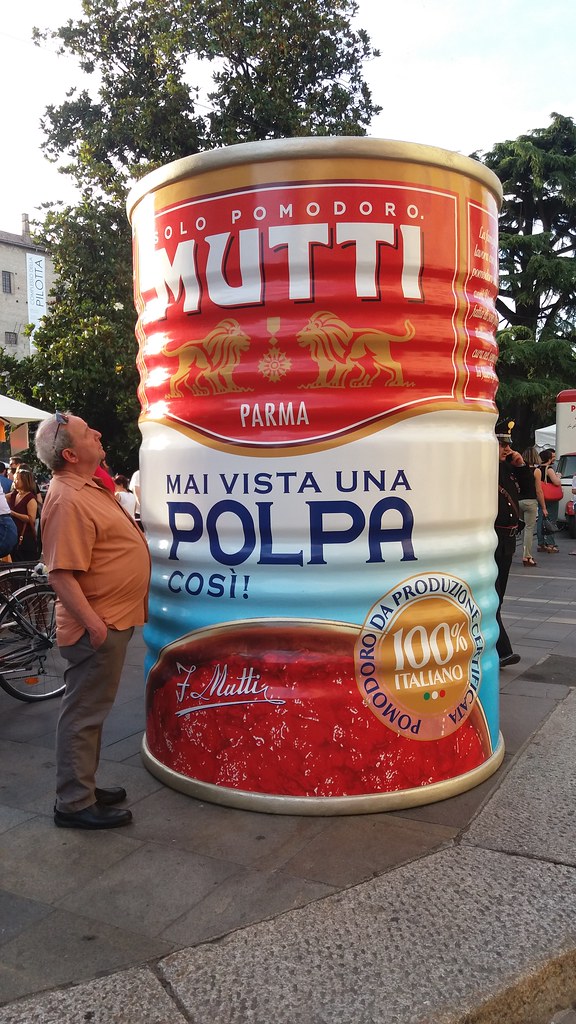
(Photo by Jill Eikenberry via Flickr)
When Brian first proposed this adventure to me I called and made an appointment with my cardiologist. Even though the food trip was to be virtual rather than actual I didn’t want to undertake it without a note from my doctor. When I described the trip to him in detail the doctor looked at me for a long time, shook his head and said:
“You have room for one more?”
(N.B. – at the end of the post you’ll find Mike’s recipe for Spaghetti alle vongole)
Gourmand (noun)
1: one who is excessively fond of eating and drinking, and sometimes eats too much2: one who is heartily interested in good food and drink
Bologna and Parma
This gourmand’s itinerary through Italy could only begin in one place: the Food Valley. This swathe of Emilia-Romagna between Bologna and Parma is where a number of Italy’s most prestigious culinary specialties are produced, including Prosciutto di Parma, Parmigiano Reggiano, Aceto Balsamico di Modena (balsamic vinegar), and Lambrusco wines.

(Photo by CIUTravel via Flickr)
Luckily, Bologna has an international airport, so you can touch down directly in the heart of the Food Valley. This area is also home to Italy’s Motor Valley, historic seat of the country’s automotive industry. The most iconic Italian sports cars and motorcycles come off the line here, so of course we would immediately pick up a Maserati Gran Turismo to explore in style over the next few days. Since both Mike and I live in Umbria, we’ll skip the plane ride and just drive north to Bologna.
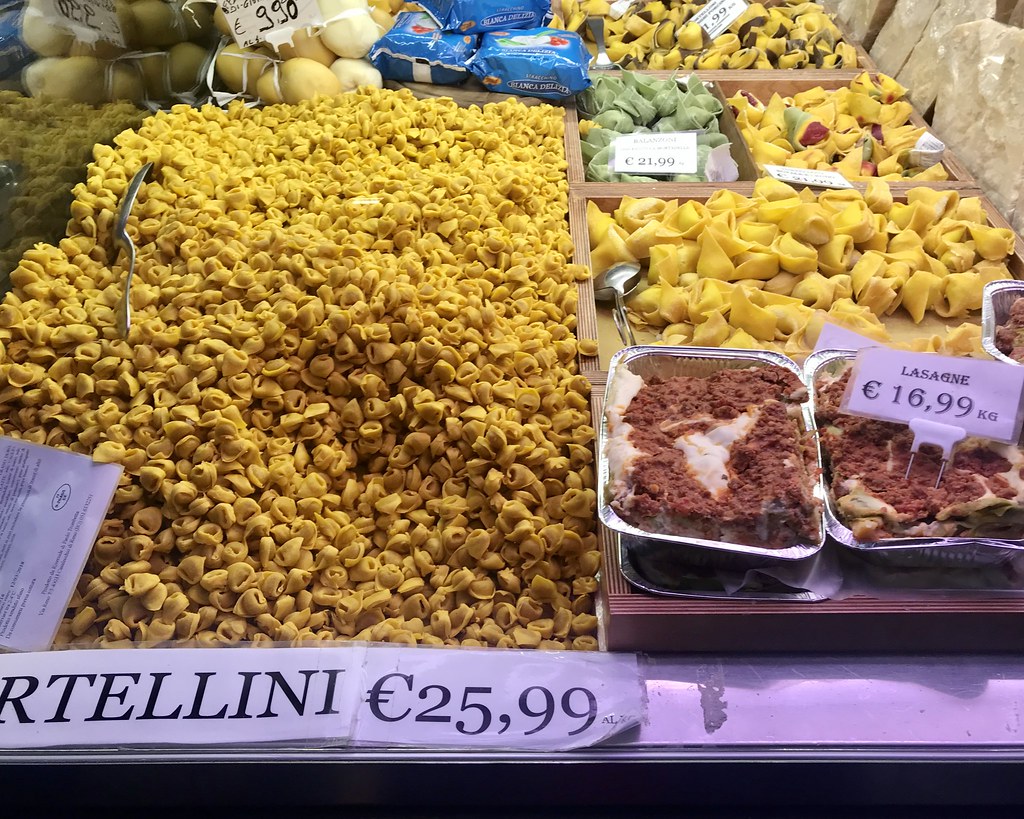
<(Photo by CIUTravel via Flickr)
After dropping our bags at the elegant Grand Hotel Majestic in Bologna’s city center, we’ll make a beeline for lunch at Trattoria Anna Maria, a no-frills landmark eatery that has been making fresh pasta for patrons each morning since the 1980s. We will inaugurate our gastronomic adventures with a heaping plate of traditional Bolognese tagliatelle al ragú, where the ribbons of golden pasta, hand rolled by an Italian grandmother, are at least as important to the dish as the eponymous meat sauce.
At the end of this hearty meal, a digestive constitutional is definitely be in order. With kilometers of porticoes and wide squares, Bologna is an extremely walkable city and most of its highlights are easily reached on foot. We will take in Piazza Maggiore with its unfinished Basilica di San Petronio, the city’s two remaining medieval towers – Torre degli Asinelli and Torre Garisenda – listing over the rooftops, and the excellent shops lining the main thoroughfares. While browsing, we can stop in for a balsamic vinegar tasting at Drogheria Gilberto, Bologna’s most famous gourmet shop.

(Photo by CIUTravel via Flickr)
To cap off our day, we’ll grab a table at Osteria del Sole, Bologna’s oldest tavern which opened in 1465 and has a retro 1950s interior and convivial atmosphere, helped along by communal tables and a mixed bag of patrons that includes locals and travelers. The osteria only serves wine, so we would stop into one of the neighboring delis to have sandwiches made with fresh crescente (flat bread) filled with “un bel letto” of prosciutto di Parma to pair with our local Pignoletto, Lambrusco, or Cabernet bottled in the surrounding hills.
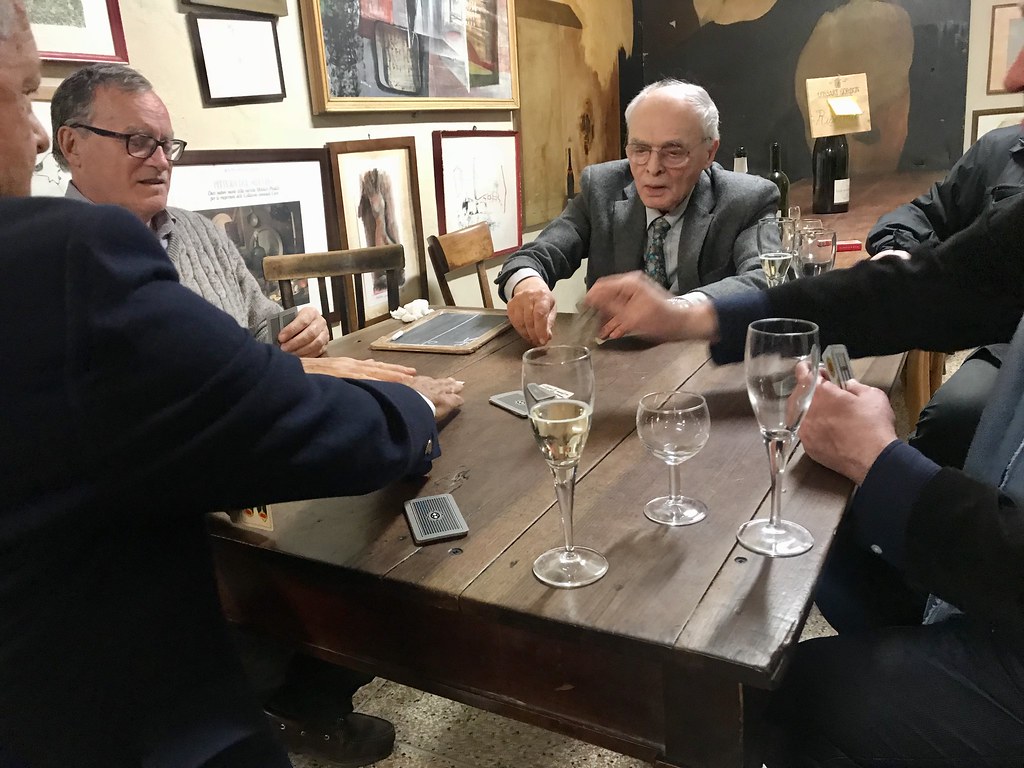
(Photo by CIUTravel via Flickr)
The following morning, we hop in our Italian sports car and zip through the countryside of nearby Parma to visit a dairy farm that produces authentic Parmigiano Reggiano, timing our visit for the early morning when the artisan cheesemakers are busy cooking that day’s batch of cheese. It’s fascinating to take in the process from milk to giant aged wheel, and then sample parmigiano aged 12, 24, and 36 months, tasting the subtle differences in flavor and texture. Afterwards, we’ll head to a nearby prosciuttificio to learn how the locals have perfected their curing techniques for ham over the centuries. Prosciutto di Parma comes with a geographic certification and iconic crown branding, and after a private guided visit to learn how the meat is cured, we’ll indulge in a much deserved pause to savor the finished prosciutto.
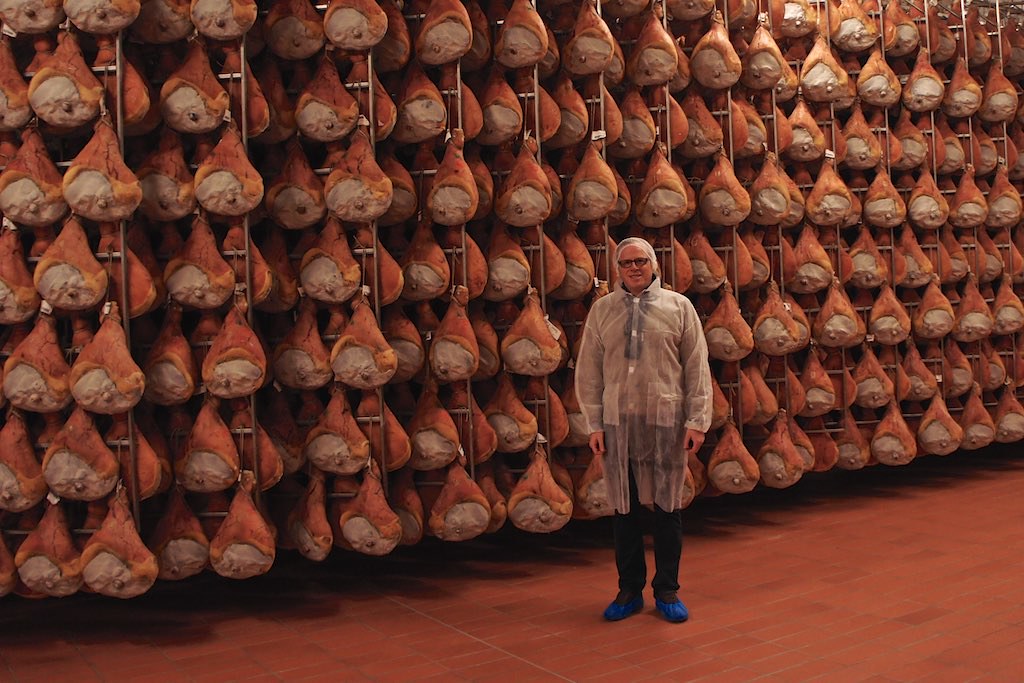
(Photo by CIUTravel via Flickr)
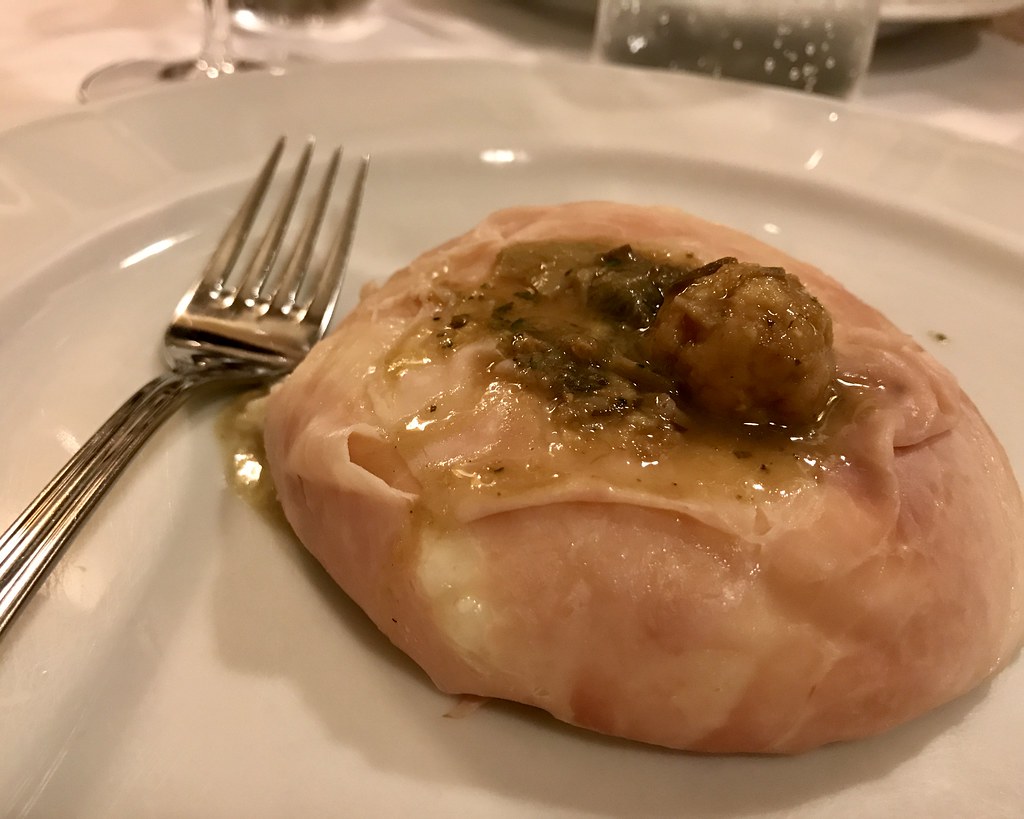
(Photo by CIUTravel via Flickr)
We’ll then head to the center of Parma to search out Ristorante Cocchi mentioned in Le Ricette dei Ristoranti D’Italia for its savarin del riso (risotto with parmigiano reggiano, butter, and porcini wrapped in slices of prosciutto cotto – yes, it is as amazing as it sounds!) . We’ll start with local salume, culatello di Zibello (the king of cured meats), spalla cotta, and more – all wolfed down with gnocco fritto, which is a beautiful way to say fried dough. After our savarin di riso and the best bollito misto (mixed boiled meats) in the world, we may be ready for a bit of a reprieve from food and wine. In the afternoon, we can visit the top automotive museums in the Motor Valley, including the two Ferrari museums (one in the center of Modena and one in nearby Maranello) or stop by the Lamborghini museum for a private factory line tour. For obvious reasons, we’ll park the Maserati a couple of blocks away.

(Photo by CIUTravel via Flickr)
Modena
The following day, we’ll leave the delights of Bologna behind and head to Modena for a 24-hour full immersion of food and pampering. The pampering would be taken care of by Casa Maria Luigia, a sumptuous boutique hotel in the Modenese countryside that was the passion project of celebrity chef Massimo Bottura and his wife, Lara Gilmore. I know that we’ll be tempted to linger by Bottura’s collection of jazz vinyls and vintage-style pool, but lunch awaits.

(Photo by CIUTravel via Flickr)
Osteria da Ermes in Modena is a lunch-only institution known for its authentic Modenese cuisine, informal atmosphere, and charismatic namesake host, Ermes. After lingering over steaming plates of fresh egg pasta tossed with the area’s famed ragù, we’ll hightail it back to Casa Maria Luigia for a well-earned nap and afternoon cocktail at the pond-side bar. We might even half-heartedly suggest a bout of tennis on the estate’s court, but I’m relatively sure nothing will come of it.
Once rested, it will be time for the dinner of a lifetime at Osteria Francescana, considered one of the best restaurants in the world and run by 3 Michelin-starred Bottura. We’d have to have booked our table months in advance, of course, but the 12-course tasting menu will make it worth the wait.
From Emilia-Romagna to Cremona and Mantova
The following few days will be on the move, flitting between some of the prettiest towns in Lombardy. We’ll begin by heading north out of Emilia-Romagna, stopping in Bussetto for a rustic lunch of cured meats and local cheeses drizzled with balsamic vinegar at the storied Salsamenteria. The afternoon will be dedicated to exploring Verdi’s House and gardens in Sant’Agata, and then we’ll make a final push to Zibello for dinner at Trattoria La Buca in Zibello to sample their famed anolini pasticciati and home-cured culatello.

(Photo by CIUTravel via Flickr)
The next morning, we’ll pass into the region of Lombardy to explore Cremona, home to the Stradivarius atelier, which produced some of the world’s finest string instruments in the 17th and 18th centuries. We’ll take in the excellent Violin Museum, admire the medieval architecture in the town center, and call in on one of the violin makers who still have workshops along the backstreets. After a demonstration and comparison of some historical instruments by a local maestro, it’s off to Mantua for dinner at Osteria D’Oca or Il Cigno dei Martini (Tortelli di zucca mantovani) to sample local specialties like lo stracotto d’asino (donkey is served in a number of traditional dishes) and cotechino (cooked pork sausage).
Verona, Vicenza, Asolo, and the Palladian Villas
It may be time to slow our pace a bit at this point, so we’ll pause for a day to explore Verona, setting of Romeo and Juliet and one of the most elegant small cities in the region of Veneto. We’ll take in highlights like the ancient Roman Arena and Scaliger Tombs in between lunch at the informal Al Pompiere (a century-old trattoria famed for its 50 types of Italian cured meats, a cheese bar with more than 100 cheeses, and a menu of simple yet excellent Venetian and Veronese dishes) and dinner at the newly renovated 12 Apostoli (Pastissada de cavalo, not sure we’ll find the braised horse is still on the menu), a fourth-generation family-run institution that has recently earned a Michelin star.

(Photo by CIUTravel via Flickr)
Upon leaving Verona, we’ll drive through the most picturesque spots in the region of Veneto, taking a turn through Vicenza to try the zuppa di trippa (tripe soup) at Trattoria Leoncino before settling into our posh digs at Hotel Villa Cipriani in the small town of Asolo. We’ll drive through the surrounding countryside the next day to visit a few lavish Palladian Villas, the clutch of UNESCO-listed estates designed in the 16th century by architect Andrea Palladio for a number of wealthy families from the Venetian Republic. If we plan it right and one of the original family owners is on site, we can schedule a private tour of their villa and enjoy an aperitivo with members of the current noble generation.
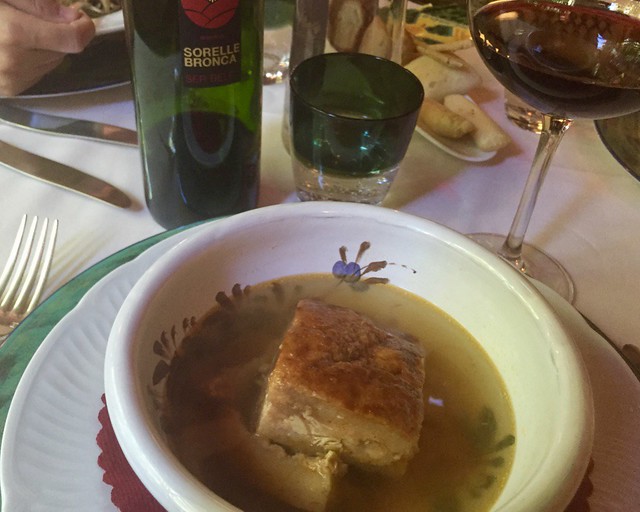
(Photo by CIUTravel via Flickr)
Our time in the Veneto hills will end with an impossibly picturesque drive through the Prosecco wine region, pausing over a steaming bowl of sopa coada (pigeon soup with local bread) at Ristorante da Gigetto in Miane. On the way, we’ll stop at the Osteria Senz’Oste to soak in the view and to buy the exclusive Valdobbiadene Superiore di Cartizze DOCG, Prosecco’s highest crù category produced in a tiny plot of just over 100 hectares, from what may be the world’s only Prosecco vending machine.

(Photo by CIUTravel via Flickr)
Venice
Today, we’ll arrive triumphant (and somewhat thicker at the waistline) in Venice and trade in our glorious sports car for an elegant water taxi. After a stroll through some of the calle of the floating city, we’ll relax over dinner in the back garden at Corte Sconta (Pasticcio di pesce and Crepes ripiene di calamaretti) and reminisce over our last week of food and driving adventures.

(Photo by CIUTravel via Flickr)
Our final day will begin with a slow morning to recuperate from the grueling pace of a gourmet itinerary. By midday, we should be ready to hop a boat to Burano for a Venetian seafood lunch at Il Gatto Nero on Burano and a turn around the tiny island to admire its pastel-colored fishermen’s houses. We’ll toast the end of our dream trip with an ombra (small glass of wine) on a cicchetti walk before dinner, savoring these tapas-style plates of meatballs, sarde in soar, fritto misto and other classics at bàcari across the city, making sure to search out Da Fiore or my favorite restaurant in Venice, Antiche Carampane.
Burp!
Bonus: Get the recipe for Mike’s Spaghetti alle Vongole.


